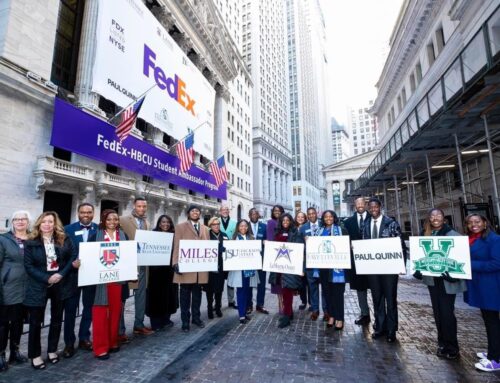What Gets Measured Gets Done: The Many Ways to Measure Social Impact
By: Amanda Ponzar, CHC: Creating Healthier Communities Chief Communications and Strategy Officer
Measuring social or community impact has never been easy for corporate citizenship teams—CSR, ESG, Foundation or otherwise. Yet, “what gets measured gets done.”
Impact can be measured in many ways — benefits to the planet, to stakeholders (like employees, customers and communities), to the business and its shareholders, and beyond. Benefits can be clearly financial with strong ROI, or intangible such as reputation or goodwill which is harder to quantify. Often, social impact teams are under intense pressure to demonstrate results and relevance, as their community benefit work can be seen as a cost center not revenue generator, and thus, the first to be cut during tough times. However, companies that align their social impact work to strategic business priorities may see additional value and benefits, or at least, if they measure the impact.
And yet, real metrics that measure real outcomes (lives or conditions improved) vs. outputs (number of screenings or meals) are difficult to quantify and take time—and money—to track and measure. Still measuring and reporting impact is a must. Measurement can help social responsibility leaders strengthen the business case and support for their work and accomplish even greater impact. In fall 2022, the Corporate Leadership Council, hosted by CHC, discussed best practices for measuring impact.
Here are a few highlights from that conversation, plus other ways to measure social and community impact:
- Tracking data requests. Business units from sales to HR regularly request data from the social impact team on diversity and inclusion, programs, communities served, or other impact stats, whether for supplier diversity, new business proposals, government regulations, annual reports, or employee recruitment and retention. Keeping track of those requests and the results—contracts won and other benefits to the business—can provide hard numbers demonstrating tangible impact and financial value.
- Science-based targets and public reporting. Sustainability goals may be more easily measured than other goals. One example is the science-based target initiative, which thousands of companies have joined to reduce greenhouse gas emissions, in accordance with the Paris Agreement. Additionally, many companies track impact according to GRI, SASB, TCFD and other standards (see more below).
- Innovative new product creation. Many products or services initially created for a social purpose or community need may also provide business value. Think about voice-to-text or closed captioning, initially created for people with disabilities but with broad market appeal. These kinds of innovations can provide significant financial benefits to the business. Plus, the disability community on its own has billions in buying power, as do other communities that might be reached through social impact work.
- ERGs and new markets. Many companies offer business resource groups (BRGs) or employee resource groups (ERGs), previously called affinity groups, to support company diversity, equity and inclusion goals and engage employees. These groups not only provide important connection and belonging for employees but also can be extremely valuable to the business by identifying new markets, revenues, and business opportunities plus helping the company become more aware to blind spots or areas to improve.
- Performance metrics and parity. Some companies tie executive compensation to social impact, sustainability, or diversity, equity and inclusion metrics. This incentive can help drive individual employees to measure and track results. And those results can be everything from recruiting and promoting diverse populations to increasing business revenue by engaging broader audiences or other sustainability or community measures. Other companies track gender parity and other issues and increase those metrics through their social impact programs. For more on diversifying the workforce and performance metrics, check out Diversifying the Workforce | CHC: Creating Healthier Communities (chcimpact.org).
- Creating future customers or employees. Many companies invest in communities around the world, providing their products and services pro bono, or helping create a stronger, healthier community by providing clean water, housing, education, job skills, tech training, business development and other community benefits. Individuals helped through the program may become future employees or customers for the business. One shipping company helps people start new businesses and then hopes they use that same shipping company to ship their products and grow their business. Some companies provide their software or products free of charge, creating customer loyalty. Many companies provide skills training, technology, workforce development, training academies and internships, helping create skilled workers for their company to build an employee pipeline, as well as building rapport for their business.
- Reputation management. Research repeatedly shows socially responsible businesses do better in the marketplace. Consumers reward good businesses, and they are employers of choice for workers. Responsible businesses also benefit from increased reputation, goodwill and trust and are given the benefit of the doubt during crisis.
- Supply chain shared goals. With increased scrutiny on the full impact of a business, including its supply chain, some companies have created shared value scorecards to track their overall impact toward social impact goals, such as sustainability metrics. Suppliers can report their metrics on a shared dashboard that the company rolls up into an overall goal.
- Employee engagement programs. Most companies measure employee engagement through philanthropic donations, event participation, and volunteer programs, with companies reporting annually on dollars raised and hours donated. Giving can be financial (cash, credit card, stock, payroll deduction through workplace giving and more) or through in-kind product donations or collection drives. Volunteering can be pro bono services, skills-based volunteering or board service; virtual or in-person; company-sponsored activities, corporate groups for team-building, or individual on your own; volunteering using company paid time off or during free time. Companies can incentivize employee engagement in giving and volunteering programs by providing a corporate match on giving and volunteer service—if the hours are tracked through the company platform. This way of measuring is attractive as it provides concrete numbers, plus, some companies only want to track social impact that easily can be quantified and audited, and employee giving and volunteering accomplishes that.
- Activism. Companies also can take part in activism and advocacy campaigns, measuring pledges, sign-ups, event attendance, posting on social media and more. This includes activities such as giving employees the day off to vote (such as the Time to Vote campaign), communicating or meeting with elected leaders, taking part in group events and more. This can bring risks if activities are seen as nonpartisan or divisive, but time off and general civic participation encourages everyone to take part.
- Lives impacted. Some companies have moved to measuring lives impacted, aligning their business and social goals to drive one focused effort. If the company helps job seekers find new roles, their business and social missions may align. This can help the company more easily measure impact. The rise of b-corps and social impact ventures also enables clearer alignment to the business and social impact as a business with a social mission positively impacts lives as part of its reason for being.
Caution: Social impact measurement isn’t easy; however, using vanity metrics or PR/ad metrics only can lead to virtue signaling. While reputation management is a benefit of social impact and corporate citizenship programs, virtue signaling, greenwashing (misleading sustainability claims) or diversity washing can backfire. Companies may make public statements about an issue to appear relevant and responsible, but stakeholders may feel their commitment isn’t authentic or that the business hasn’t done anything tangible to support the verbal commitment. Examples of this include turning everything pink for Breast Cancer Awareness Month, using green language and imagery without the product being sustainable, making pay or gender equity commitments without follow-through or internal review, posting thoughts and prayers after tragedies without acting, or relying on social media posts, public relations or ad campaigns rather than addressing the real issue.
With the rise of employee influencers and broad social media usage, companies can get called out by their own employees, whistleblowers, or the general public for false or misleading social impact commitments or stats. Plus, some companies may not want to draw attention to their CSR/ESG initiatives (see Wharton “greenhushing” Nov 2022 article).
For more, check out the Corporate leadership Council, or read more about various reporting frameworks:
- Sustainability Reporting: An Overview of GRI, CDP, SASB, TCFD, & UN SDG Frameworks (freeworldfinance.com)
- A Practical Guide to Sustainability Reporting Using GRI and SASB Standards – SASB
- GRI, IRF and SASB: Updated guidance on reporting frameworks | Greenbiz
- CDP vs SASB vs GRI Sustainability Reporting Standards | Blog | OneTrust
Amanda Ponzar, Chief Communications and Strategy Officer, CHC: Creating Healthier Communities
Amanda was promoted to Chief Communications and Strategy Officer in August 2018 after originally joining CHC in August 2016 as VP of Communications and then Chief Marketing Officer. Prior to joining CHC, Amanda held communications roles with top global nonprofits, including United Way Worldwide, Good360, and American Red Cross National Headquarters, as well as marketing roles with The Franklin Mint and other groups. Amanda earned a master’s degree in media communications with a focus on advertising and marketing from Webster University, a bachelor’s degree in English from Penn State, plus Executive Education in Corporate Social Responsibility from Harvard Business School.
Amanda is a media spokesperson, quoted in The Wall Street Journal, Associated Press, MSN, NBC News, Reader’s Digest, INC, Fast Company, Washington Post, Forbes, New York Post, MarketWatch, U.S. News and World Report, Woman’s Day, Working Mother Magazine, Prevention, Parents, The Hill, Yahoo! Glamour, Total Beauty, EcoSalon, DailyWorth, CareerBuilder, Upworthy, Toronto Star, and many more. Connect with her on LinkedIn or Twitter @LivingUnited.








